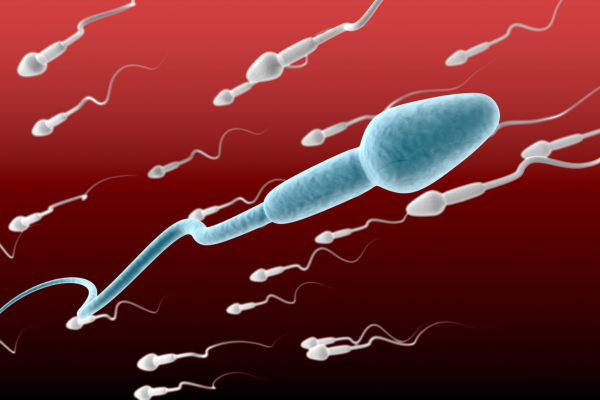Introduction
Sperm health is a crucial factor in male fertility, as it plays a vital role in the ability to conceive a child. Understanding the key factors that contribute to sperm quality is essential for men who are planning to start a family or who are experiencing fertility challenges. In this article, we will explore the seven major signs of unhealthy sperm and provide insights into the importance of maintaining optimal sperm health.
Sperm health is a complex and multifaceted topic, as it involves various aspects of sperm production, maturation, and function. The quality of sperm can be influenced by a range of factors, including hormonal imbalances, genetic factors, lifestyle choices, and environmental exposures. By recognizing the signs of unhealthy sperm, men can take proactive steps to address any underlying issues and improve their chances of achieving a successful pregnancy.
Table of Contents
Sings Of Unhealthy Sperm
Unhealthy sperm can manifest in various ways, with some common signs including low sperm count, poor motility, and abnormal shape. Low sperm count can significantly impact fertility and may indicate underlying health issues that need to be addressed. Additionally, poor motility refers to the inability of sperm to swim properly towards the egg for fertilization, which can hinder chances of conception.
Moreover, abnormalities in sperm shape known as teratozoospermia may decrease fertility potential and increase the risk of genetic abnormalities in offspring. It’s crucial for individuals experiencing these signs to consult with a healthcare provider for proper diagnosis and guidance on potential treatment options. Overall, being aware of these signs can help individuals take proactive steps towards improving their reproductive health and increasing their chances of successfully conceiving.
Low Sperm Count (Oligospermia)
One of the most common signs of unhealthy sperm is a low sperm count, also known as oligospermia. This condition is characterized by a reduced number of sperm cells in the ejaculate, which can significantly impact the chances of fertilization. Oligospermia can be caused by a variety of factors, including hormonal imbalances, varicocele (a condition where the veins in the scrotum become enlarged), and genetic factors.
Hormonal imbalances, such as low testosterone or high prolactin levels, can disrupt the delicate balance required for optimal sperm production. Varicocele, a relatively common condition, can also contribute to low sperm count by causing increased temperature in the testicles, which can impair sperm development. Additionally, certain genetic factors, such as chromosomal abnormalities or genetic mutations, can lead to a reduced sperm count. Understanding the underlying causes of oligospermia is crucial for developing an effective treatment plan and improving the chances of conception.
Poor Sperm Motility (Asthenozoospermia)
Another key sign of unhealthy sperm is poor sperm motility, also known as asthenozoospermia. Sperm motility refers to the ability of sperm cells to swim and navigate through the female reproductive tract, which is essential for successful fertilization. Factors such as oxidative stress, varicocele, and certain lifestyle choices can contribute to impaired sperm motility.
Oxidative stress, which is an imbalance between the production of free radicals and the body’s ability to neutralize them, can damage the sperm’s ability to move effectively. Varicocele, as mentioned earlier, can also lead to poor sperm motility by increasing the temperature in the testicles. Additionally, lifestyle factors such as smoking, excessive alcohol consumption, and exposure to environmental toxins can negatively impact sperm motility. Understanding the potential causes of asthenozoospermia is crucial for developing targeted interventions to improve sperm quality and increase the chances of conception.
Abnormal Sperm Morphology (Teratozoospermia)
The shape and structure of sperm, known as sperm morphology, is another important aspect of sperm health. Abnormal sperm morphology, or teratozoospermia, refers to a condition where a significant proportion of sperm cells have an abnormal shape or structure. This can include issues such as an irregular head shape, a bent or coiled tail, or other structural abnormalities.
Factors that can contribute to abnormal sperm morphology include genetic factors, environmental exposures, and certain medical conditions. Genetic factors, such as chromosomal abnormalities or genetic mutations, can lead to inherent issues with sperm structure. Environmental factors, such as exposure to toxins, radiation, or certain chemicals, can also disrupt the normal development of sperm cells. Additionally, medical conditions like varicocele, infections, or hormonal imbalances can impact sperm morphology. Understanding the potential causes of teratozoospermia is crucial for identifying and addressing the underlying issues that may be affecting sperm health.
Sperm DNA Fragmentation
The integrity of sperm DNA is another crucial aspect of sperm health. Sperm DNA fragmentation refers to the presence of damaged or fragmented DNA within the sperm cells. This condition can significantly impact the ability of the sperm to fertilize the egg and lead to successful embryo development.
Factors that can contribute to sperm DNA fragmentation include oxidative stress, varicocele, and advanced age. Oxidative stress, as mentioned earlier, can cause damage to the sperm’s genetic material, leading to DNA fragmentation. Varicocele, by increasing the temperature in the testicles, can also contribute to this issue. Additionally, as men age, the risk of sperm DNA fragmentation increases, which can impact fertility. Recognizing the importance of sperm DNA integrity and addressing the potential causes of fragmentation are essential for improving the chances of successful conception.

Oxidative Stress and Sperm Quality
Oxidative stress is a significant factor that can negatively impact various aspects of sperm health, including motility, morphology, and DNA integrity. When the body’s production of free radicals exceeds its capacity to neutralize them, oxidative stress ensues, resulting in damage to cells.
Sperm cells are particularly vulnerable to the effects of oxidative stress due to their high content of polyunsaturated fatty acids and their limited antioxidant defenses. Factors that can contribute to increased oxidative stress include exposure to environmental pollutants, unhealthy lifestyle choices (such as smoking and excessive alcohol consumption), and certain medical conditions (like diabetes or inflammation).
The impact of oxidative stress on sperm quality can be far-reaching. It can impair sperm motility, leading to poor swimming ability, and it can also cause abnormalities in sperm morphology, such as irregular head shapes or tail defects. Additionally, oxidative stress can damage the sperm’s DNA, leading to fragmentation and compromising the genetic material that is essential for successful fertilization and embryo development.
Understanding the role of oxidative stress in sperm health is crucial for developing targeted interventions to improve sperm quality and increase the chances of conception. This may involve lifestyle modifications, the use of antioxidant supplements, or addressing underlying medical conditions that contribute to oxidative stress.
Lifestyle Factors Affecting Sperm Health
Lifestyle choices can have a significant impact on sperm health, and recognizing the influence of these factors is essential for maintaining optimal fertility. Dietary habits, stress levels, and exposure to toxins can all play a role in the quality and function of sperm.
A healthy, balanced diet rich in antioxidants, vitamins, and minerals can support sperm production and function. Conversely, a diet high in processed foods, unhealthy fats, and refined carbohydrates can contribute to oxidative stress and impair sperm quality. Additionally, factors such as stress, which can disrupt hormonal balance, and exposure to environmental toxins, like pesticides or heavy metals, can negatively impact sperm health.
Lifestyle choices, such as smoking and excessive alcohol consumption, can also have a detrimental effect on sperm. Smoking can lead to increased oxidative stress, DNA damage, and impaired sperm motility, while excessive alcohol intake can disrupt hormonal regulation and impair sperm production.
By recognizing the influence of lifestyle factors on sperm health, men can take proactive steps to make positive changes and improve their chances of achieving a successful pregnancy. This may involve adopting a healthier diet, managing stress levels, and avoiding exposure to known toxins or harmful substances.
Medical Conditions Linked to Unhealthy Sperm
Certain medical conditions can also contribute to the development of unhealthy sperm, and understanding these links is crucial for addressing underlying issues and improving fertility.
Hormonal imbalances, such as low testosterone or high prolactin levels, can disrupt the delicate balance required for optimal sperm production and function. These hormonal imbalances can be caused by various factors, including pituitary gland disorders, testicular dysfunction, or even certain medications.
Other medical conditions, such as varicocele, infections, and chronic illnesses, can also impact sperm health. Varicocele, a condition characterized by the enlargement of veins in the scrotum, can lead to increased temperature in the testicles, which can impair sperm production and function. Infections, such as sexually transmitted infections or prostatitis, can also contribute to poor sperm quality by causing inflammation and damage to the reproductive system.
Chronic medical conditions, such as diabetes, thyroid disorders, or autoimmune diseases, can also have a negative impact on sperm health. These conditions can disrupt hormonal balance, impair blood flow to the testicles, or cause other systemic effects that can compromise sperm quality.
Recognizing the potential links between medical conditions and unhealthy sperm is crucial for seeking appropriate medical evaluation and treatment. By addressing the underlying health issues, men can take steps to improve their sperm health and increase their chances of achieving a successful pregnancy.
Improving Sperm Health: Diagnosis and Treatment Options
Addressing the signs of unhealthy sperm requires a comprehensive approach that involves both diagnostic testing and targeted treatment options. Proper evaluation and diagnosis are essential for identifying the specific factors contributing to poor sperm health and developing an effective plan to address them.
Diagnostic tests, such as semen analysis, can provide valuable insights into the various aspects of sperm health, including sperm count, motility, and morphology. Additionally, specialized tests, such as sperm DNA fragmentation analysis, can help assess the integrity of the sperm’s genetic material. These diagnostic tools are crucial for identifying the underlying issues and guiding the development of a personalized treatment plan.
Once the specific sperm health concerns have been identified, a range of treatment options may be considered. Lifestyle modifications, such as adopting a healthier diet, reducing stress, and avoiding exposure to toxins, can play a significant role in improving sperm quality. Supplements, such as antioxidants or vitamins, may also be recommended to address specific deficiencies or imbalances.
In cases where medical conditions are contributing to poor sperm health, targeted medical interventions may be necessary. This could include addressing hormonal imbalances, treating infections, or addressing underlying health issues like varicocele or chronic illnesses.
By working closely with healthcare professionals, men can develop a comprehensive plan to improve their sperm health and increase their chances of achieving a successful pregnancy. This may involve a combination of diagnostic testing, lifestyle changes, and targeted medical treatments, all aimed at optimizing sperm quality and function.
Conclusion
Understanding the major signs of unhealthy sperm is crucial for men who are planning to start a family or who are experiencing fertility challenges. By recognizing the factors that can impact sperm health, individuals can take proactive steps to address any underlying issues and improve their chances of conception.
Through a comprehensive approach that includes diagnostic testing, targeted treatments, and lifestyle modifications, men can work towards achieving optimal sperm health and fulfilling their dreams of starting a family.




